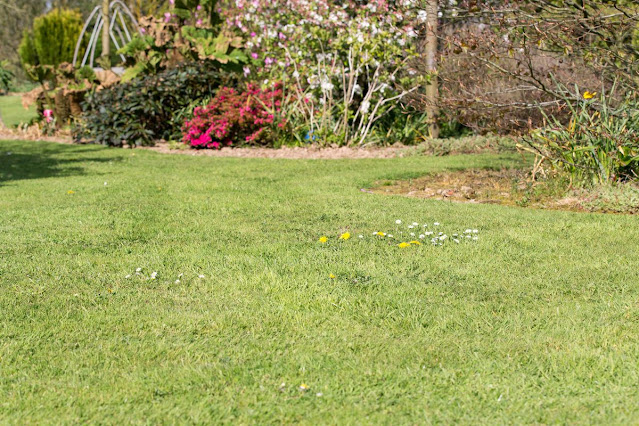How To Keep Squirrels Off Your Roof: A Homeowner’s Guide to Preventing Pesky Invaders
Protect Your Home From Costly Damage With These Expert Tips On Squirrel Prevention
Squirrels may look cute and harmless as they scurry around your yard, but they can cause serious problems once they find their way onto your roof. From chewing through shingles to nesting in attics, these persistent critters can cause costly damage to your home if left unchecked. In this guide, we’ll walk you through how to keep squirrels off your roof using effective, humane strategies that are proven to work.
Why Are Squirrels Attracted To Roofs?
Understanding why squirrels end up on your roof is the first step to keeping them away. Here are a few reasons why they may be targeting your home:
-
Access to food sources: Bird feeders, pet food, or fruit-bearing trees near your home can attract squirrels.
-
Shelter opportunities: Squirrels look for warm, safe places to build nests, especially during colder months. Attics and soffits provide ideal shelter.
-
Easy access: Overhanging tree branches, fences, or electrical lines can serve as bridges to your roof.
Once they gain access, squirrels often chew through wood, shingles, and even vent covers to find a way inside your attic or roof space.
1. Trim Trees and Branches Near Your Roof
One of the most effective and straightforward ways to deter squirrels is to eliminate their access points.
-
Trim any tree branches that hang within 6 to 8 feet of your roofline.
-
Remove vines or other climbing vegetation on the sides of your home.
-
Keep hedges and shrubs trimmed low and away from exterior walls.
Squirrels are agile jumpers and climbers, but creating space around your roof makes it more difficult for them to reach it.
2. Install Squirrel Guards on Utility Lines and Pipes
Squirrels often use power lines, cables, and downspouts as a pathway to your roof.
-
Install squirrel baffles or guards on vertical poles and wires to block their access.
-
Wrap PVC piping around vertical downspouts or poles to make them too slippery to climb.
-
Consider calling your utility company to install protective guards on overhead wires (many offer this service for free).
These small changes can block squirrels from climbing to your roof with ease.
3. Use Squirrel-Repelling Scents and Sprays
Squirrels have an extremely sensitive sense of smell, and certain odors can repel them effectively.
Natural repellents include:
-
Peppermint oil – soak cotton balls and place them near entry points.
-
Vinegar-soaked rags – strong and effective, though the scent can be unpleasant for humans, too.
-
Hot pepper spray – apply to your roof’s edge, eaves, and around attic vents. You can buy commercial sprays or make your own using water, cayenne pepper, and dish soap.
Reapply sprays regularly, especially after rain.
4. Seal Entry Points and Secure Your Attic
If squirrels are already on your roof, they might be attempting to get inside. Prevent access with these actions:
-
Inspect your roofline, soffits, and vents for gaps or damage.
-
Use steel mesh or metal flashing to cover openings—squirrels can chew through wood and plastic.
-
Install chimney caps to block entry through the chimney.
-
Seal attic vents with heavy-duty screening, ensuring airflow is maintained.
Check periodically for signs of chewing or fresh entry holes—squirrels can be very persistent.
5. Remove Food Sources
Make your property less appealing by removing any attractants:
-
Avoid using bird feeders, or place them far away from the house with squirrel baffles.
-
Pick up fallen fruits and nuts from trees.
-
Secure trash cans with tight-fitting lids.
-
Don’t leave pet food or water bowls outside for extended periods.
A clean yard with fewer food temptations reduces the chance of a squirrel setting up camp.
6. Install Motion-Activated Devices
Modern technology offers humane, non-invasive deterrents that can scare off squirrels before they get too close.
Consider:
-
Motion-activated sprinklers – the sudden burst of water startles and repels squirrels.
-
Ultrasonic repellent devices – these emit high-frequency sounds that are annoying to squirrels but typically inaudible to humans.
-
Flashing lights or predator noises – mimic the presence of larger animals, such as hawks or owls.
These tools can be especially effective when placed near common entry points or roof access areas.
7. Use Metal Flashing and Roof Edge Guards
Prevent chewing damage and nesting by reinforcing vulnerable areas:
-
Apply metal flashing along the eaves, roofline, and ridge vents.
-
Install roof edge guards to protect shingles from being lifted or gnawed at.
-
Cover fascia boards with aluminum or steel sheeting.
These reinforcements discourage squirrels from gnawing their way inside and make the roof a less attractive nesting spot.
8. Consider Professional Wildlife Removal Services
If squirrels have already entered your attic or are causing repeated issues, it may be time to call in professionals.
A licensed wildlife control expert can:
-
Safely trap and remove squirrels from your home.
-
Identify all access points and recommend customized sealing solutions.
-
Offer long-term deterrent systems like electric barriers or professional-grade repellents.
This is especially helpful if you're dealing with multiple squirrels, or if they’ve already caused structural damage or nesting inside your roof.
Final Thoughts: Prevention Is Key
Keeping squirrels off your roof is all about being proactive. By eliminating access points, removing attractants, and securing vulnerable areas, you can protect your home from costly damage and potential infestations. Regular inspection, maintenance, and a bit of creativity go a long way toward squirrel-proofing your property.
And remember—while squirrels may seem like minor annoyances, ignoring the problem can lead to chewed wiring, water leaks, and attic infestations. So, take action today and keep your roof squirrel-free!
Need help inspecting your roof for signs of squirrel damage? Reach out to a local lawn care services to assess your home and provide expert recommendations.




Comments
Post a Comment